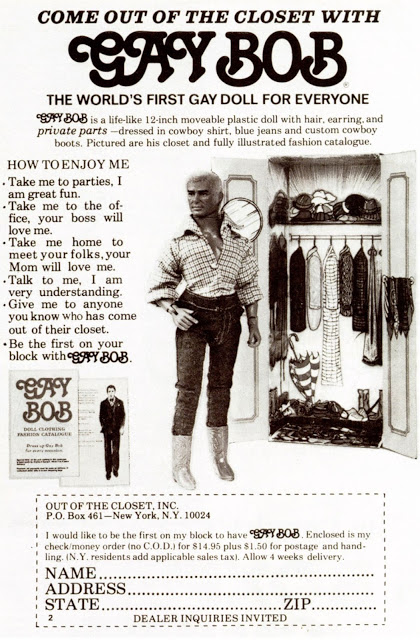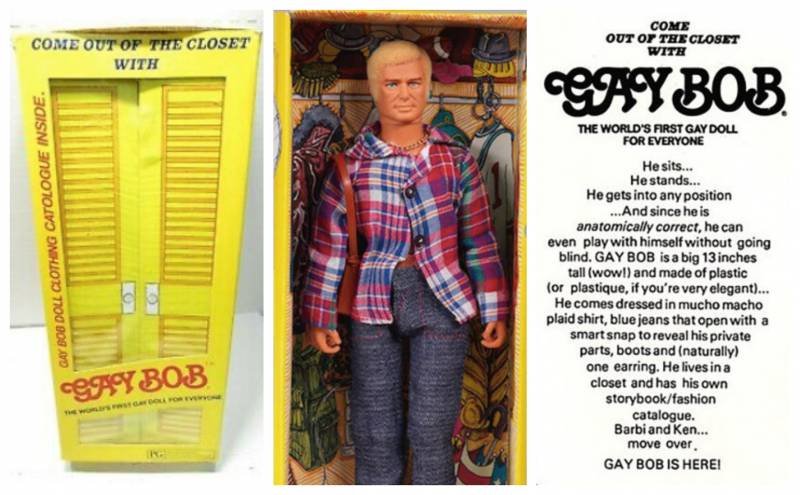In 1860s Germany, Karl Heinrich Ulrichs urged other gay people to publicly reveal their sexual orientation. In 1914, Magnus Hirschfeld wrote of the revolutionary potential of respected gay women and men coming out en masse. By the late 1960s, coming out was treated with the utmost importance within the gay rights movement. And in 1977, Gay Bob arrived.
It was the same year that Harvey Milk became the first openly gay man elected to public office in California. And while Milk was urging his friends and community to come out of the closet, the “World’s First Gay Doll” was doing the exact same thing.

Designed to look like a combination of Paul Newman and Robert Redford and packed into his own cardboard closet, Gay Bob was the brainchild of former advertising executive Harvey Rosenberg. The New Yorker used $10,000 of his own money to launch the doll and had it made in Hong Kong after American manufacturers refused to make Bob’s groin anatomically correct.
Rosenberg wanted Gay Bob to normalize the coming out process, while also acting as a fun accessory for those who were already out and proud. In an interview to promote Gay Bob, Rosenberg once said, “Bob’s perfect for an executive’s desk, dash board ornament, the attache case, the bathtub rim, a health club gym bag.”
Despite Gay Bob having a realistic penis, the snazzy fashion catalog contained in the doll’s packaging was distinctly child-friendly:
Hi boys, girls and grownups, I’m Gay Bob, the world’s first gay doll. I bet you are wondering why I come packed in a closet. ‘Coming out of the closet’ is an expression which means that you admit the truth about yourself and are no longer ashamed of what you are… Gay people are no different than straight people. If everyone came out of their closets, there wouldn’t be so many angry, frustrated, frightened people… It’s not easy to be honest about what you are, in fact it takes a great deal of courage. But remember, if Gay Bob has the courage to come out of his closet, so can you!
Despite his optimistic message, conservative groups of the era viewed Gay Bob as a threat to family values. Edward Rowe, the executive director of Protect America’s Children, was quoted in a 1978 issue of the Pittsburgh Post-Gazette describing Gay Bob as “another evidence of the desperation the homosexual campaign has reached in its effort to put homosexual lifestyle, which is a death style, across to the American people. I can only hope that the children who are given these Gay Bob dolls will not comprehend the meaning and intent of the campaign.”


